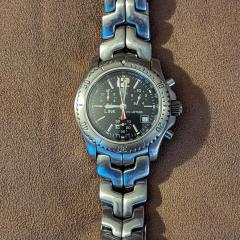There Must Be Better Way Department: Getting Oil Out of Bottles
-
Recently Browsing
- No registered users viewing this page.
-
Topics
-
Posts
-
By watchweasol · Posted
Hi as Richard said cousinS is the place to start. -
I thought about some easily dissolvable thick oil or grease on the pallet fork that once assembled could be run through cleaning fluid to remove the temp grease used to hold the assembly together. Just a thought but haven't tried it yet.

.thumb.jpg.e1737221d1bb91b37331a627546ff250.jpg)




Recommended Posts
Join the conversation
You can post now and register later. If you have an account, sign in now to post with your account.
Note: Your post will require moderator approval before it will be visible.